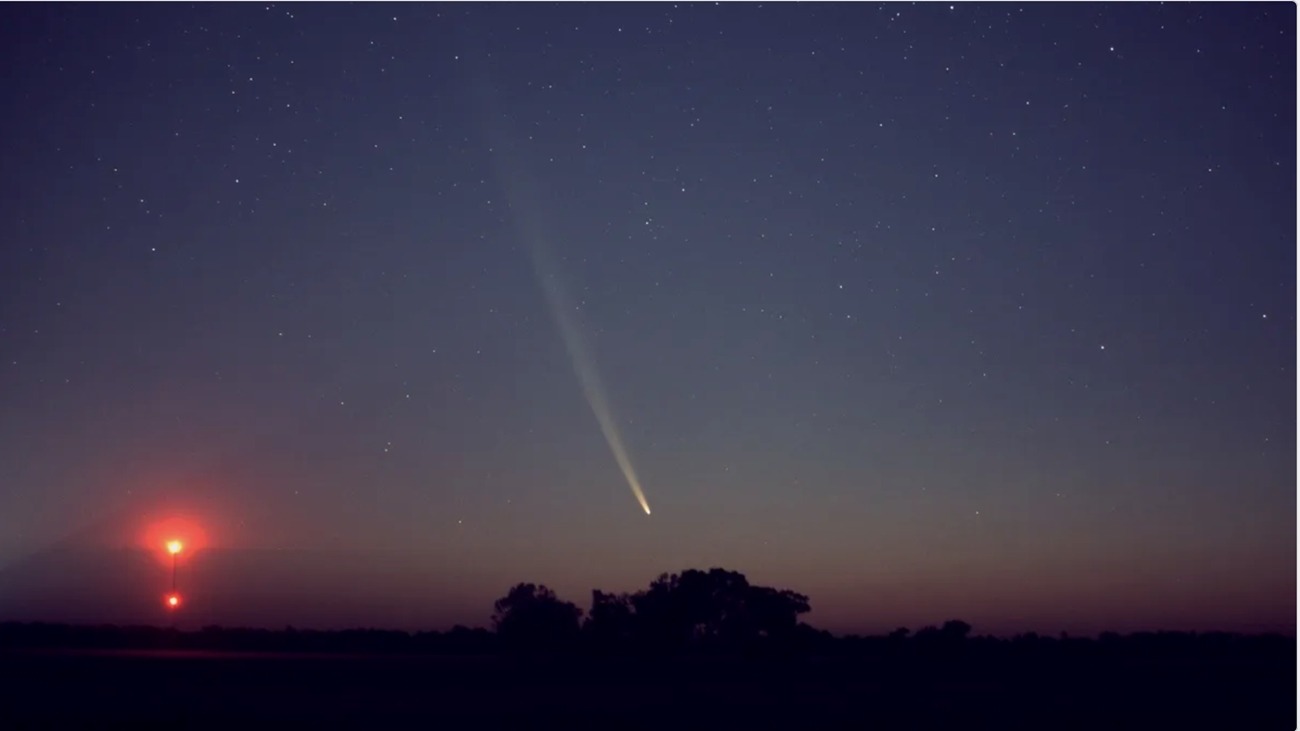


Barran Press
The International Astronomical Center announced that the northern hemisphere will witness a rare astronomical event starting tonight, October 12, 2024, with the visibility of Comet Tsuchinshan, which has not been seen for millions of years. The comet can be observed with the naked eye for ten days as it returns after passing near the Sun, continuing its journey that began millions of years ago.
In a statement released on the center's website, Director Mohammed Shawkat Uda confirmed that the sky is currently showcasing two exceptional comets. The first, Comet Tsuchinshan-ATLAS (C/2023 A3), has become bright enough to be seen after sunset in the western sky.
Discovered on January 9, 2023, by China's Tsuchinshan Observatory, Comet Tsuchinshan is composed of rock and ice. Its existence was later confirmed by another observatory in the ATLAS network based in South Africa. The second comet, ATLAS (C/2024 S1), was discovered on September 27, 2024, by an ATLAS observatory in Hawaii.
Uda noted that initial calculations indicated Comet Tsuchinshan orbits the Sun approximately every 80,000 years, but updated calculations suggest it takes millions of years to complete one orbit, making this its first visit for humanity. The comet was visible in the eastern sky before sunrise over the past months and became observable with small telescopes starting in April. Its brightness increased, allowing visibility to the naked eye in dark areas by late September, coinciding with its closest approach to the Sun on September 27.
On October 7, the comet aligned with the Sun, appearing just 3.5 degrees away and shining at a brightness of -4.9, making it one of the brightest comets of the century. The Khatem Observatory captured images of the comet in daylight during the alignment, a rare occurrence due to sunlight obscuring celestial bodies.
Uda stated that on October 10, the comet's brightness improved to -4, and it will be closest to Earth on October 12 at 15:18 UTC, approximately 71 million kilometers away. The comet began appearing in the western sky after sunset on October 11 and will become easier to see starting October 13 as it rises higher in the sky.
The comet's tail is expected to reach 20 to 25 degrees in length, featuring a faint blue ion tail that is best observed through telescopes. Predictions suggest that the comet will remain visible to the naked eye in the western sky until the end of October, with brightness diminishing to magnitude 2 by October 20 and 4 by early November.
Regarding Comet ATLAS, Uda mentioned that it could reach a brightness of -8 by the end of October, a significant brightness not seen in a long time. Comet ATLAS is classified as a sungrazing comet, passing close to the Sun. It is expected to reach its closest point to the Sun on October 28, at a distance of 1.2 million kilometers from the Sun's center.
Uda emphasized that while ATLAS is currently too dim to be seen without a telescope, its brightness may increase as it approaches the Sun, although its future remains uncertain; it could either disintegrate from the heat or offer a spectacular display.